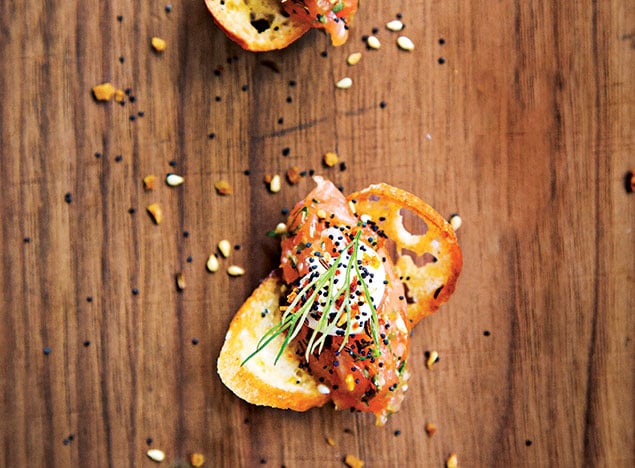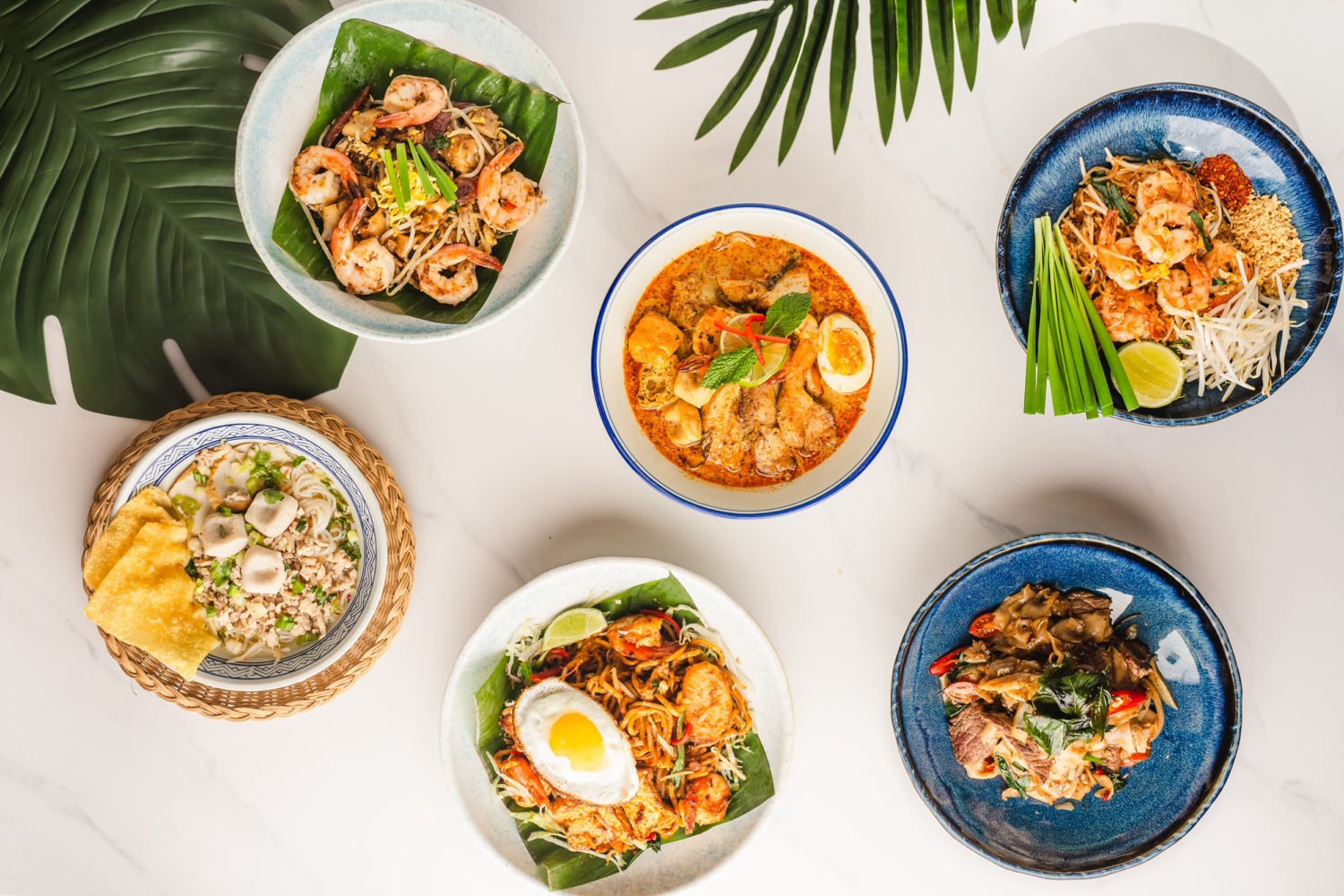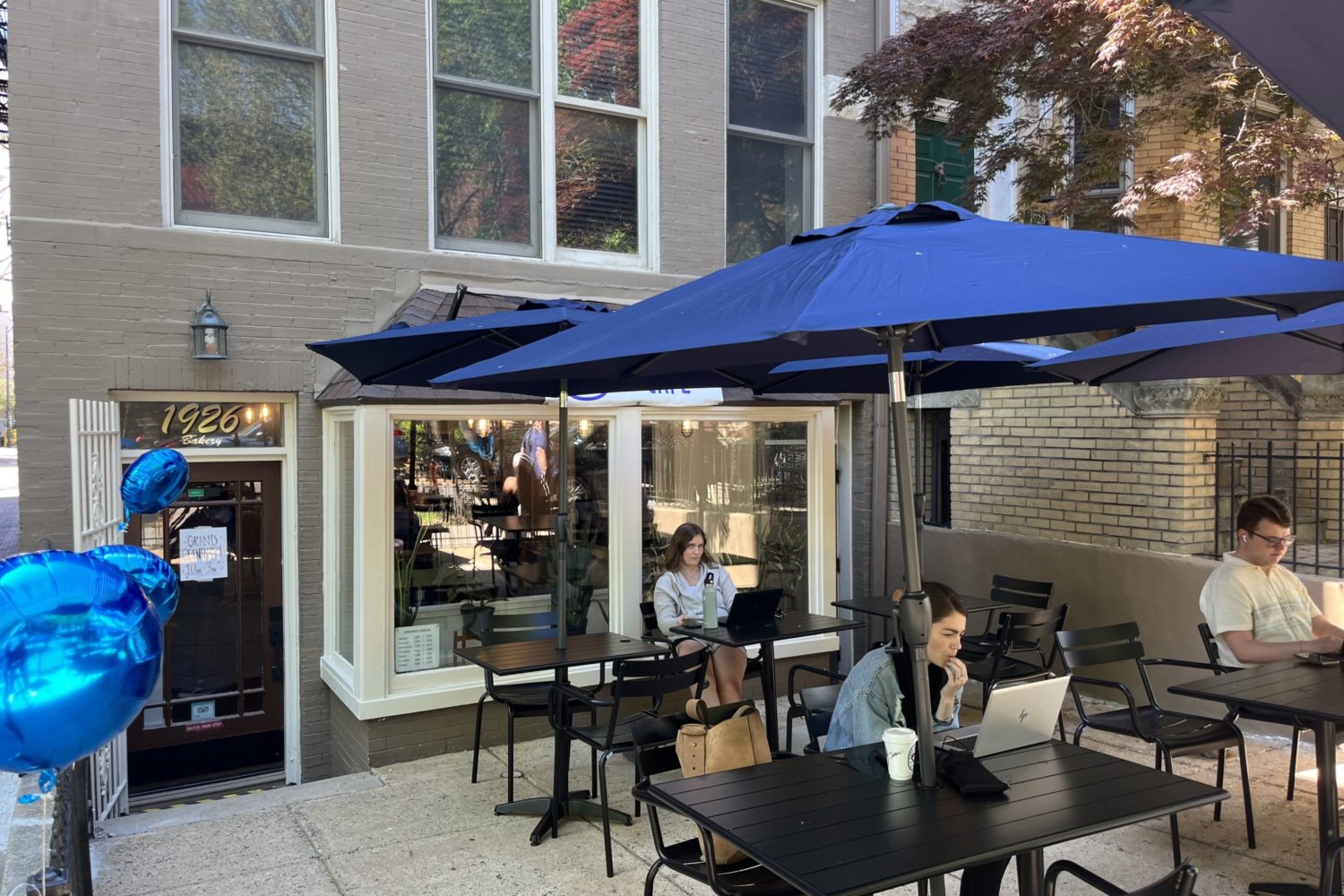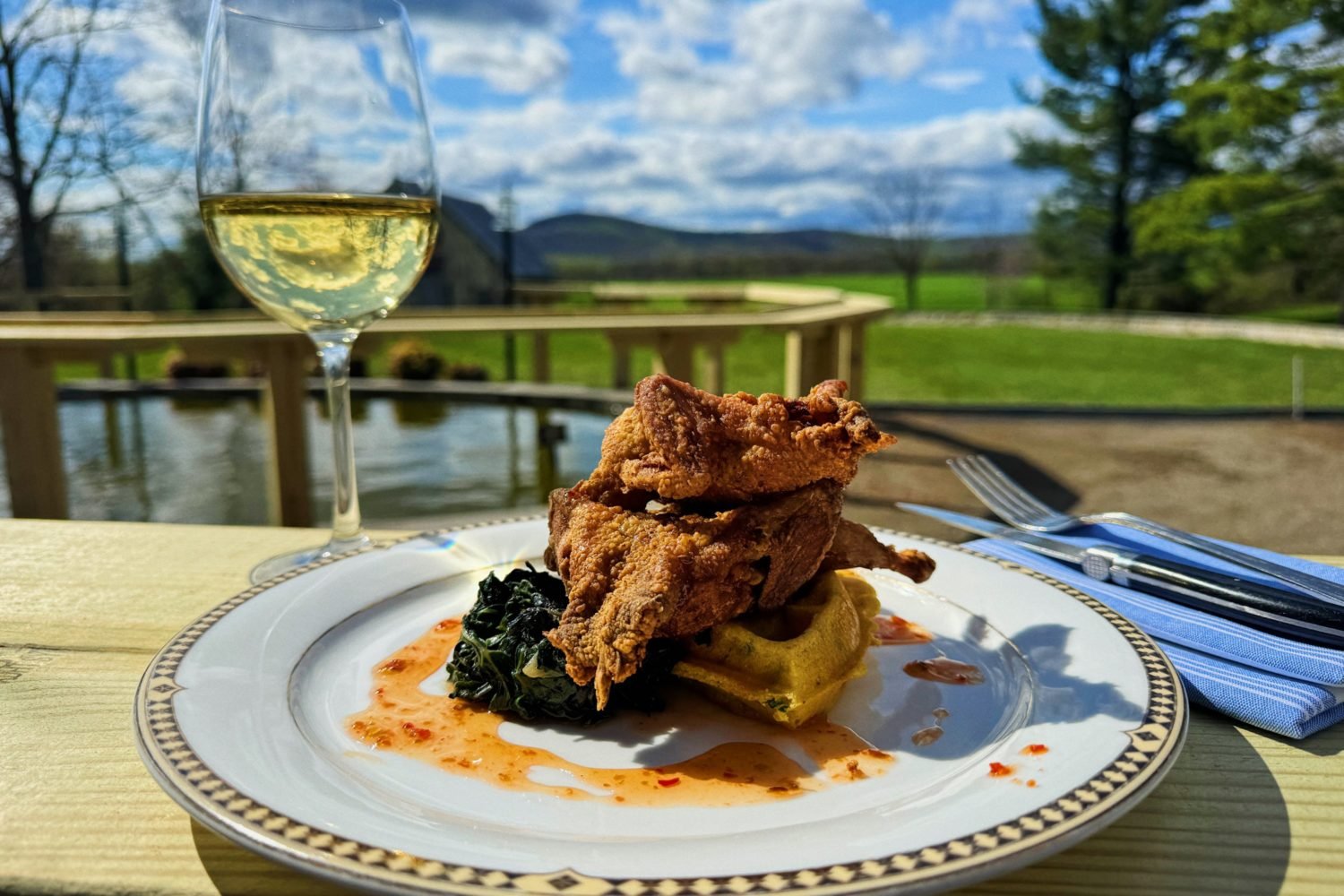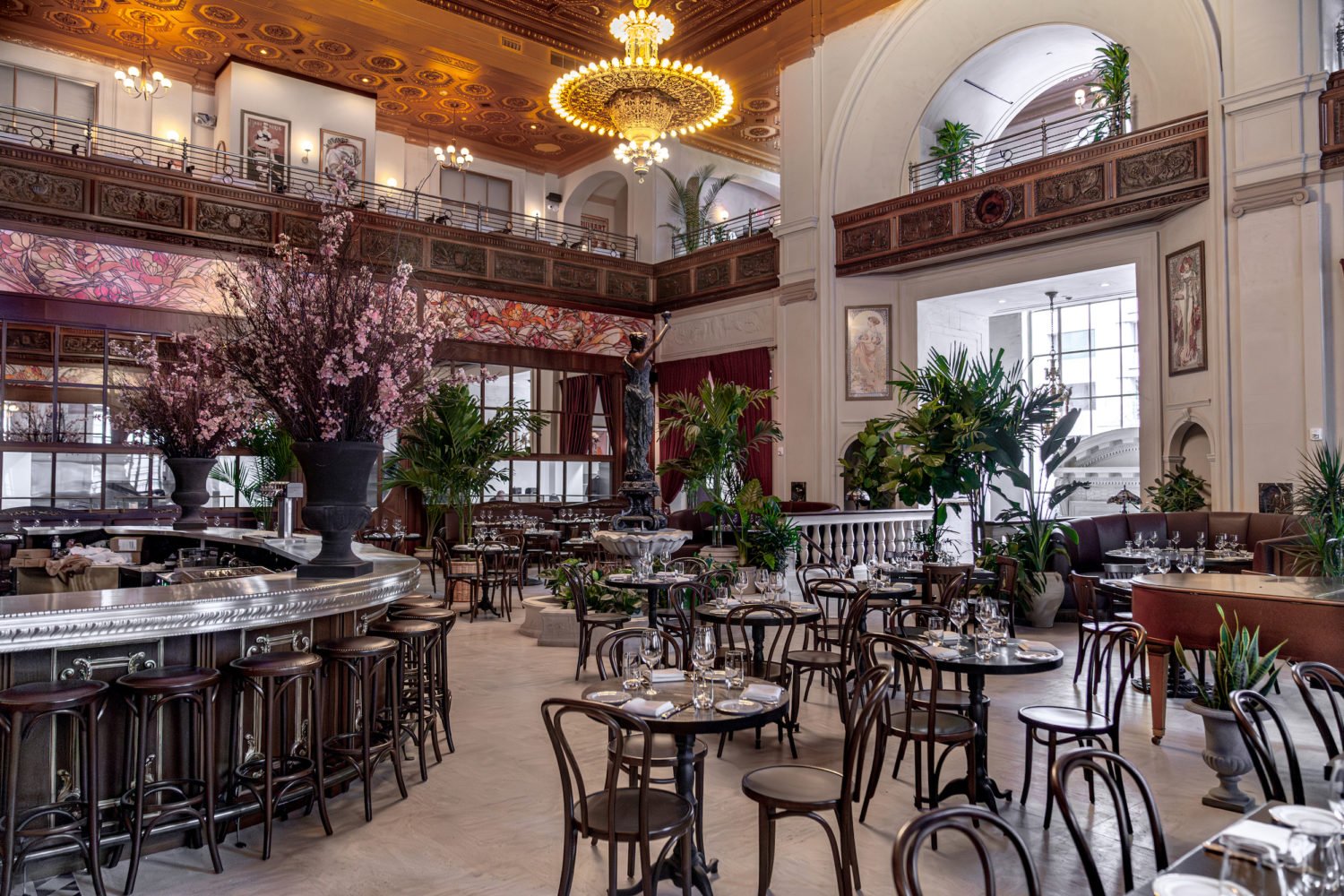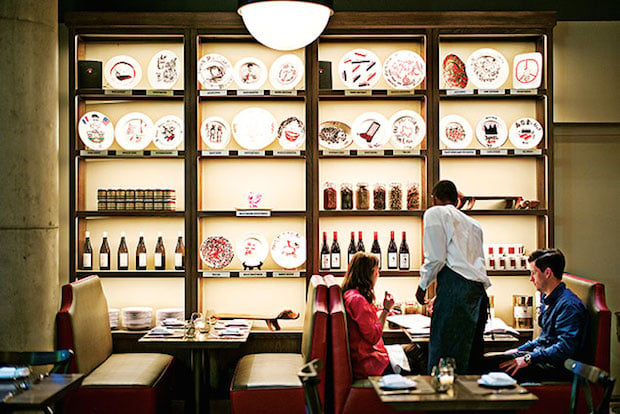About DBGB
It had been a cold, rainy day, and the warmly lit space was more than inviting—it was enveloping. The wine flowed, and we needed every ounce of it to chase the accumulating richness: kingly quantities of sausage and pâté, with robust preparations of mussels, calamari, and sautéed salmon to follow, each more meticulously detailed than the last. By the time dessert came, we felt sated and happy, luxuriating in our immense sense of well-being.
All in all, I’d say it was a pretty wonderful meal at DBGB.
Too bad that it was in New York, at the Bowery original, and not at the DBGB I’m actually here to tell you about—the recently opened DBGB at CityCenterDC.
This is not the review I expected to write.
When news broke last year that Manhattan master chef Daniel Boulud was going to open a restaurant in DC, the foodie community responded with the anticipatory ardor of Catholics awaiting the announcement of a new pope.
If anything, Boulud might be an even more revered figure in his particular context. His first restaurant, Daniel, on the Upper East Side, celebrated its 20th anniversary last year (an epoch in an industry where places close nearly as fast as they open), and even more astonishing than the prices is that there’s no evident wear or creakiness in the operation.
Over the years, Boulud has evolved into a brand, which appears to be the fate of all celebrated chefs in a media-drenched age. But he enjoys enormous credibility, in part because he has managed to uphold his exacting standards as he has extended his reach.
The same can’t be said for many of his empire-minded colleagues, for whom Washington seems to exist as a kind of glorified cash machine. Eric Ripert, Jose Garces, Jean-Georges Vongerichten—all have been lured by the prospect of an affluent and stable market. These restaurants, or “concepts,” start off strong. But when the boss, along with his crew from the home office, skips town after a few months, you can practically hear the energy being sucked from the room.
I can’t decide which is more surprising, that Boulud would have been persuaded to open a restaurant in DC or that he should have fallen victim to carpetbagging-chef syndrome.
But how else to explain the sloppiness of detail I saw over the course of three visits to DBGB in DC? Or the airport-lounge soullessness of the place?
DBGB is a slick space that wants to be a warm space, but the attempts to impart character to what is essentially the ground floor of a glass-enclosed office building—a portrait of a rooster, quotations about the pleasures of the table etched onto the glass walls—feel half-hearted at best. And the installation of autographed plates from notable chefs in the upstairs dining room, set off with an unsubtle and buttery light, brings to mind a home-ec display at a small-town museum.
New York has it all over Washington when it comes to lighting. The Bowery location could make a corpse look good.
The word that comes to mind at DBGB DC is “tasteful,” which, yes, can mean full of taste but more often than not connotes a kind of stolid reserve, like a furniture showroom.
“Totally different restaurants,” said the host in the Bowery the night I dropped by.
“Different how?” I asked.
DC, he said, is “more formal,” by which I took him to mean dull, stodgy.
When I wondered aloud why Boulud had opted for a duller, stodgier—ahem, more formal—spinoff, he just shrugged and said: “DC.”
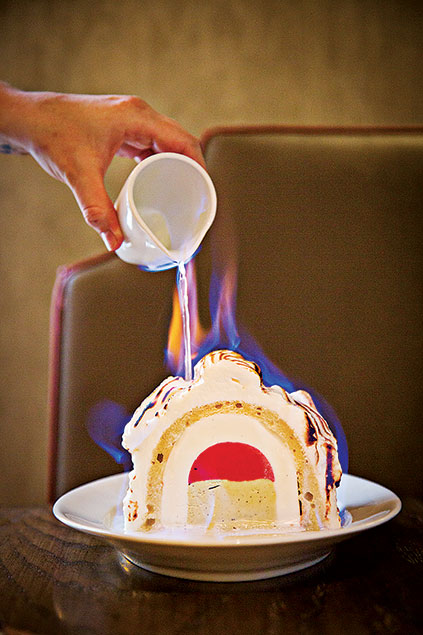
At both locations, the cooking is closer to the spirit of a beer hall than a palace of haute cuisine: short on daintiness, long on richness. And by and large, the things that are good there are the things that are good here. There are just more good things there than here.
The country-style pâté is close to perfect, and the terrines—including a head cheese with the texture of whipped cream cheese—are even more satisfying. The sausages (more than a dozen in all) are good, not great—and an order of the Tunisienne was singularly unappealing: a browned coil sitting atop a dark mound of cooked greens. The fried calamari is memorable primarily for the kaffir-lime whip smeared onto the side of the bowl. Boulud ought to bottle the stuff, it’s that good.
Some plates, like a crab persillade, are disappointing for delivering only big, rich flavors (as opposed to the subtlety and cleanness of detail you go to a Boulud restaurant to find), while others are disappointing for being so poorly thought through. The Frenchie, one of two burgers, was a monstrous mess (patty, morbier cheese, greasy pork belly) that fell apart halfway through. A Moroccan-style lamb dish, priced at $48, brought three beautifully cooked chops along with a pile of wet couscous and oily braised vegetables.
The best thing I ate on my three visits in DC was the coq au vin, the kind of canonical preparation no one thinks to attempt anymore. Spear a forkful of tender chicken and chewy, smoky bacon, swab them through the clinging red-wine reduction, and see if all your problems don’t temporarily come to naught.
A plate of pancetta-wrapped trout—the Italian bacon swaddled around the fish to create a second skin—was nearly as good. A friend said, “I don’t even know what I’m eating. It tastes smoky and meaty, but it flakes like a fish.”
These were, alas, aberrations.
And speaking of fish: the salmon at DBGB DC is described generically as “Atlantic salmon.” At DBGB NY, it’s HiddenFjord, from the Faroe Islands. Either Boulud thinks Washington diners are too provincial to be informed of the provenance or New York is getting better fish. All I can say is that the dish I had in the Bowery—skin salty and crunchy as a cracker, a beautiful coral interior—was more memorable than any fish I had in DC.
The dish that drove home the precision of the cooking in New York was our dessert, an apple tart with hard-cider sorbet. At DBGB DC, I’d eaten a fig tart whose crust was underbaked, tried four bites of a soufflé that never set, and luxuriated in a textbook baked Alaska. One out of three. The apple tart was everything I’d hoped the fig tart would be: a rich, buttery crust capped with apples that rode the line between sweet and tart.
The tart was the recommendation of a fill-in server, taking over for our slammed waiter. Both instilled confidence with their knowledge and self-assurance. It was often the opposite at DBGB DC, where I had the impression of a staff under enormous pressure to get it right. At my last meal there, the staff didn’t get everything right, and watching my poor server at the end of a fumbling night made me think of a nervous pupil who would have to abase himself before the headmaster.
Boulud has suggested he wants to be a part of the food world in DC and that he intends for DBGB to be around a long time. It would help if he brought more of New York with him.
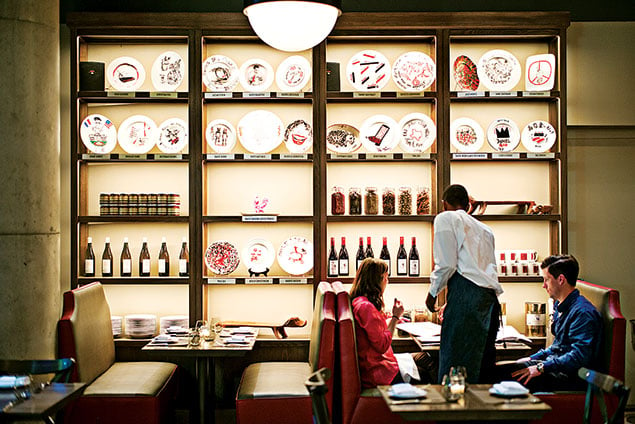
This article appears in the December 2014 issue of Washingtonian.

